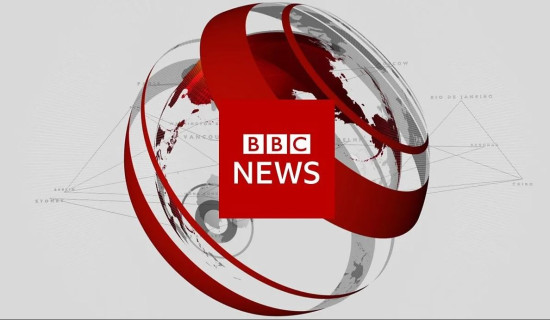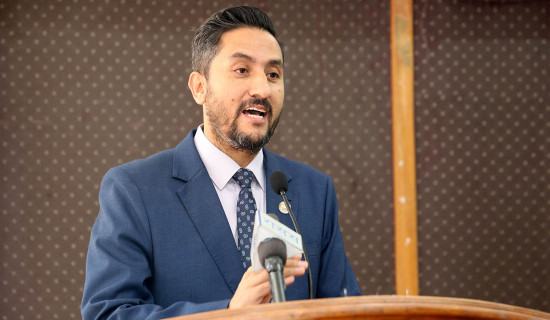- Wednesday, 17 December 2025
Water For All: A Mission For Mankind
The World Food Day is being marked with slogan of ‘Water is food, Water is life: Leave no one behind’ today (Oct 16). As 150 UN member nations celebrate the Day, it comes as a gentle reminder that drinking water is still a global challenge. The UN General Assembly in July 2010 proclaimed access to safe and clean water drinking as a basic human right. The United Nations Sustainable Development Goal 6 (UN SDG, 2015-2030) envisions “Clean water and sanitation for all”. This global solidarity is a testimony that disparity in access to safe drinking water is a hidden inequality and consolidated efforts are needed to address it.
Water is an indispensable element of life. The human body contains about 65 per cent water and constitutes around hundred trillion water molecules. A universal solvent, water facilitates body cells to use valuable nutritive elements in food. An average adult human would require 2.2 to 3 litres of drinking water depending on gender, degree of physical work and physiological conditions. Water is needed to sustain many metabolic functions including nourishment of cells, binding of molecules, regulation of body temperature, transport of nutrients, formation of saliva, lubrication of joints and flushing of body waste.
Water quality
However, conformance of water quality to the physical, chemical and microbiological parameter of applicable regulatory guideline is crucial. Any noncompliance resulting from sensory aspects, pH, and concentration of heavy metals, minerals along with presence of pathogens can impact health. A host of water-borne diseases including typhoid, diarrhoea, cholera, hepatitis and gastroenteritis are major public health challenges in most developing countries. Water sustains all forms of life on earth and its sparing use is crucial. While water constitutes 71 per cent of the earth surface, only 2.5 per cent is fresh and suitable for drinking. As per the FAO, about 2.4 billion global citizens reside in water-stressed countries. Over 600 million people, who rely at least partially on aquatic ecosystem, are affected by impacts of increasing pollution, climate change and ecosystem degradation on water. Amidst the challenges of growing population and global warming, conservation of water is critical.
The importance of water for a thriving civilization was felt early on in the ancient Licchhavi era. Stone spouts also known as “Dhunge Dhara”, wells and ponds were built by rulers in every locality in the Kathmandu Valley. The remnants of those historical constructions still stand as a testimony of ancient initiatives. Nepal is a water resource abundant country and hydropower sector is already being harnessed as a major energy source. However, ironically many parts of Nepal are still reeling from water scarcity. As in a typical developing country, the water experience of an ordinary citizen is woven by complexities of topography setting, unplanned urbanisation, policy implementation, family resource constraints, political agenda and pangs of patriarchy to mention a few.
Barren areas in far western Nepal have been battered by years of insufficient rains. This has compelled mass male migration for work; an issue which has hit the family setup hard. Many village women are compelled to walk miles to fetch water for the family, a symbolic portrait of a rural setting in most developing countries. Access to water in urban settings too has seen the brunt of growing population density. Most growing cities face irregular and inadequate supply of clean drinking water. Many households purchase drinking water in 20-litre jars and tankers. Water level in major rivers flowing through cities has decreased over the years. Ground water level is receding. Deep boring for water source is common. Unplanned settlements have blocked natural water paths, the impact of which was reflected in the recent monsoon flooding in some urban settlements in Kathmandu.
As a long-term intervention to ease water supply in the Valley, the Melamchi Drinking Water Project was launched in 1998. The project saw the light of the day in 2021. However, supply has been irregular, citing maintenance breakdowns, trials and impacts of natural disasters in source areas mainly flooding in monsoon. To cater to the rising demand of consistent supply of clean drinking water, a sustainable policy approach based on coordination between associated line ministries and stakeholders is needed. Effective implementation of applicable legislation is imperative. Despite efforts by Department of Food Technology and Quality Control of the Government of Nepal to ensure food safety, occasional reports of non-compliance in jar water quality have raised public concerns.
Expanding the public drinking water supply network to address growing demand is the need of the hour. Natural water sources needs to be preserved. Cleanliness of water source and maintaining hygiene along the distribution chain is crucial. Effluent treatment and its release needs to regularly monitored as any health hazard arising from groundwater contamination especially with faecal coliform can have fatal consequences. Conservation efforts need to be expedited to preserve Himalayan glaciers and prevent the gradual depletion of icecaps. Conservation of Chure region, afforestation, rainwater harvesting are some of the key initiative that needs to be seriously addressed. Despite global aid, the present status of 280 incomplete drinking water projects across Nepal is alarming.
Building pathways
The earth has been kind to support the life of 8 billion global citizens and a vibrant ecosystem of animals and plants. While efforts to safeguard humanity are ongoing, the speculated shortage of food by 2050 can be reversed by ensuring sustainable use of natural resources. The undeterred focus of international humanitarian agencies through decades in providing food to famine-stricken parts of the world is exemplary. Compliance to applicable drinking water regulations is crucial and a commitment for self-improvement from processors is imperative. Any activities in underground or underwater life impacts adjacent countries. Policy to ensure sustainable approach to urbanisation would be a timely strategy. In the face of looming global food security, it is time to rekindle empathy and humanity and ensure fair-share allocation of the precious resource “water”.
(The author is a Food Technologist and can be contacted at monicakpg@yahoo.com).
















